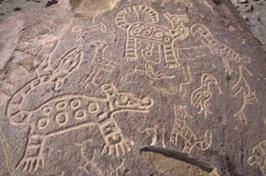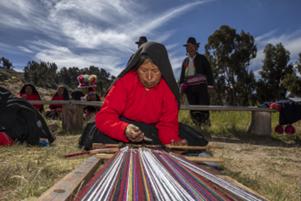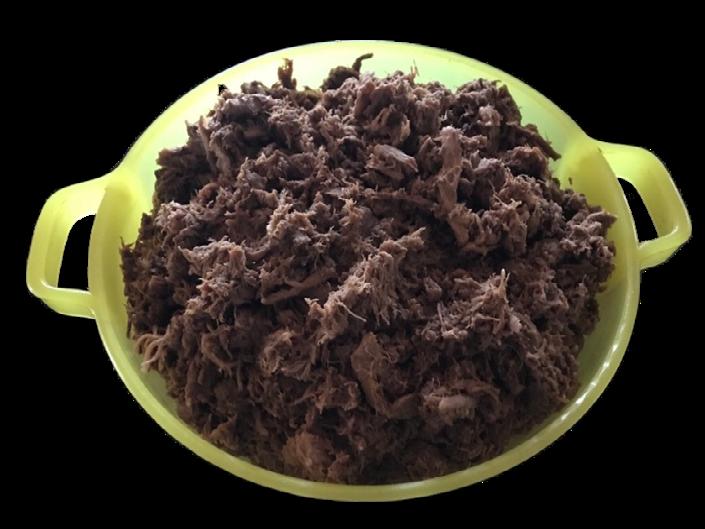STRENGTHENING BONDS: POTENTIAL CONFLUENCES BETWEEN PERU AND BOTSWANA
reátegui
Botswana, the former British protectorate of Bechuanaland, achieved independence on September 30, 1966, being one of the few countries in Africa that has enjoyed democratic stability since that date and is also one of the least populated.
Its remarkable economic growth is admirable, transforming it from one of the poorest countries in Africa to one of the most prosperous. This success is based on a significant focus on improving education, which now accounts for 21% of its GDP, universalizing access to the healthcare system, successfully reducing mortality rates from diseases, and infrastructure investments funded by dividends from mining, particularly diamonds. Additionally, the services sector, including tourism, and the industrial sector have become essential components of this social and economic transformation.
Mario BustaMante
Minister in the Diplomatic Service of the Republic. Head of Chancery of the Embassy of Peru in South Africa
One of the main objectives of the Peruvian Ministry of Foreign Affairs' Strategic Plan for Africa 2024-2030 is to “expand Peru's diplomatic presence in Africa and strengthen bilateral relations with African countries”. In this regard, of the 55 countries that make up the African continent, there are still no diplomatic relations with 12, one of them being Botswana, which is also the headquarters in its capital, Gaborone, of the Southern African Development Community (SADC), an important subregional development body.
Diplomatic relations with Botswana, an example of democratic stability in a continent as diverse as Africa, are expected to be established this year, 2025.
Main comparative data between Peru and Botswana
Source: Statista, World Bank, Macro Data
Potential confluences between Peru and Botswana
At first glance, one might think that there are no points in common between Peru and Botswana, as they are countries so geographically distant and dissimilar in language, culture and economy; however, there are areas in which potential for interaction and collaboration can be found:
1. Tourism.- An interesting fact is that Peruvian citizens do not need a visa to enter Botswana as tourists. Both Peru and Botswana have great natural and cultural diversity. Machu Picchu and the Okavango Delta are representative sites of the World Heritage of Humanity. Cooperation and promotion of best practices in sustainable tourism to avoid overexploitation of the most representative tourism resources of both countries is an area with great potential for analysis.
Delta de Okavango.
Source: https://eacnur.org/es/blog/delta-okavango-lugar-unico
2. National Parks and Wildlife Reserves.Considering that 30% of Botswana's territory is occupied by National Parks and Wildlife Reserves, information and experiences in selective ecotourism could be shared, as these areas avoid mass tourism and maintain the exclusivity of safaris, protecting wildlife and flora conservation.
Source: UNESCO
3. Mining.- Peru has diversified mineral resources, some of which, such as lithium, copper, silver and gold, are considered critical minerals, while Botswana stands out for its production of gemquality diamonds. In this area alone, Botswana will achieve revenues of almost US$ 5 billion in 2022. Given its importance as a resource-generating activity, cooperation in mining technology and trade could be areas for our countries to develop
4. Agriculture.- Agro-exports in Peru have increased steadily in recent years thanks to a combination of favourable legislation, an increase in the agricultural frontier, improved productivity and diversification of destination markets for Peruvian products. This strategy could be shared with Botswana, as its economy is highly dependent on the exploitation of diamonds which have a finite exploitation horizon of approximately 20 more years.
5. Education.- One of the pillars of Botswana's economic growth has been sustained investment in education since its independence. Experiences and best practices could be shared in areas such as online education, teacher training, the development of educational programs, and educational infrastructure that reflect the specific needs of each country.
Cultural Convergence Points between Peru and Botswana
Although Peru and Botswana have unique cultures and traditions, there are some cultural convergence points they share:
1. Music and dance.- Apart from the rich musical expressions and dances that both countries have, such as Andean music or marinera in Peru and traditional rhythms such as Tswana in Botswana,
a music that could bring us together is the “AfroPeruvian” genre, which, although in its development is mixed with elements of Spanish music, such as the guitar, has its origin in percussion instruments of undoubted African influence.
On the other hand, both countries have registered cultural expressions related to music and dance on the UNESCO Intangible Cultural Heritage List, such as the “Hatajo de Negritos”, “Las Pallitas”, and the “Danza de las Tijeras” on Peru's side, and the traditional music “Dikopelo” and “Seperu” in the case of Botswana.
2. Celebrations and rituals.- Both countries celebrate important festivals and rituals. In our country, significant celebrations include Christmas and popular festivities such as the Fiesta de la Virgen de la Candelaria in Puno, the Inti Raymi in Cusco, and the Vendimia Festival in Ica. In Botswana, popular events include the Cassava Harvest Festival, the Rain Festival, and the Hunting Festival. An exchange of festive practices could foster a deeper understanding of both cultures.
3. Cave paintings.- There are important rock art sites that show paintings and petroglyphs that tell stories of the first civilizations. Peru could enhance the value of some of them, such as those of Pizacoma, in Puno, threatened by mining concessions, or the petroglyphs of Toro Muerto, in Arequipa, as Botswana has done by including the Tsodilo site, called by some the “Louvre of the desert”, on the World Heritage List.
Toro Muerto, Arequipa
Tsodilo Paintings
4. Craftsmanship and textile wealth.Craftsmanship and textiles are highly developed arts in both countries. Chulucanas pottery is one of our 11 products with a designation of origin recognized by INDECOPI. Additionally, UNESCO's List of the Intangible Cultural Heritage of Humanity includes the “Textile Art of Taquile in Puno,” the “Intangible Culture of Aymara Communities”—which emphasizes the reinforcement of traditional knowledge related to the production of traditional textiles—and the “Ceramic Production of the Awajún People.”
On Botswana's side, there is a rich tradition of basket weaving and leatherwork, and the “Terracotta Craftsmanship of the Kgatleng District” in the southeast of the country is also inscribed on the Intangible Cultural Heritage List.
5. Orality and storytelling.- In both countries, oral tradition and storytelling are very important among indigenous peoples, who transmit stories, legends, myths and traditions for generations. Thus, both Peru and Botswana preserve oral and narrative practices. Our country with the oral heritage and cultural manifestations of the Zápara people (Peru-Ecuador border) and the Aymara people; Botswana with the preservation of 28 recognized languages, many of them spoken by less than 1% of the population.
In conclusion, a characteristic feature of our national identity is multiculturalism, an attribute that can also be seen in the people of Botswana, made up of three main ethnic groups, each with its own traditions and
artistic expressions, although this does not prevent them from being proud of their national identity.
Finally, as a corollary we can state that, although Peru and Botswana are different countries, there are areas where mutually beneficial confluences can be found. Cooperation in tourism, national parks, mining, agriculture, education and similar cultural manifestations can be an effective way to boost a still incipient bilateral relationship.
Now that Peru has recently given constitutional recognition to the Afro-Peruvian people, respecting their cultural identity, it is time to look more broadly and deeply at the African continent in order to establish cooperative ties and take advantage of opportunities, because, although Africa is geographically distant from our country, its ancestors have had a significant contribution in the construction of the Peruvian identity. The nearly one million AfroPeruvians reflect that identity.
Terracotta Crafts in Kgatleng
Textile art of Taquile
URBAN ART AND AFRO-DESCENDANT ROOTS IN THE EXHIBITION “POR LAS ESQUINAS DEL BARRIO” (THROUGH THE CORNERS OF THE NEIGHBORHOOD).
Melina suárez Borda
Through the corners of the neighborhood
Source: www.ccincagarcilaso.gob.pe/actividades/por-las-esquinas-del-barrio/
In the 2017 national census, around 828,841 people in Peru, 4% of the country's total population, selfidentified as Afro-Peruvian (Andina, 2018); that is, people who highlight their African heritage as a central part of their identity. In a historical context marked by the invisibilization and stigmatization of Afro-descendant identities, the act of self-identifying as Afro-Peruvian not only implies the affirmation of a
"From now on, I don’t want to straighten my hair I don’t want to And I will laugh at those who, in order to avoid – as they say –to spare us some unpleasantness, call black people people of color."
“They called me Negra"- Victoria Santa Cruz
a cultural heritage, but also the vindication of rights and active resistance in the face of structures of exclusion. This political and cultural process represents an individual and collective effort to position Afro-Peruvian voices in the national public discourse.
The Peruvian State has carried out certain initiatives to recognize the Afro-Peruvian legacy and its impact on society. This can be seen in the recognition of several Afro-Peruvian artists, as well as in the celebration of the Afro-Peruvian Culture Day held since 2006 and the publication in 2009 of the supreme resolution “Historical Pardon to the Afro-Peruvian People” (El Peruano, 2023). However, beyond these formal measures, the process of identity “from within”, from the Afro-Peruvian community itself, stands out as fundamental for the members of this population to position themselves as agents of change from their own spheres of action (Higashi, 2024).
This is the context for the exhibition “Por las esquinas del barrio” (Through the corners of the neighborhood) by Peruvian artist Joan Jiménez, known by his artistic name Entes. From his own experience as an Afrodescendant Peruvian, Entes, characterized by his urban style, highlights the legacy of the country's Afro-descendant and indigenous communities in his art. Thus, this new exhibition, which includes paintings, engravings and a sculpture, is not far from
that premise; however, it introduces an everyday and intimate urban spatial environment such as the neighborhood. This is a space where, as Jorge Villacorta, curator of the exhibition, points out, “whoever is not from there and enters it, instantly recognizes his or her foreignness”.
In Peru, as in many other societies, the neighborhood represents a place of closeness where diverse identities converge in a constant coexistence. In this environment the tensions of a wider outside world can be reflected, as well as the pride and struggle of neighboring identities. At the same time, the neighborhood can also be a space where friendly and respectful relationships emerge. In this new exhibition Entes celebrates the richness and diversity that emerges in the neighborhood, highlighting the mestizaje and the everyday. Through vibrant colors and energetic scenes, the artist depicts moments of positive coexistence in the neighborhood, such as dancing, conversations, food or desire. In this way, the neighborhood is transformed into a stage of memory, resistance and construction of local identities.
Art, especially urban art, represents a closer and more accessible means for historically minimized populations, such as the Afro-Peruvian, to express their identity and resistance from their own spheres of action and daily life. In “Por las esquinas del barrio”, Entes invites us to rethink the value of the neighborhood as a nearby space, where positive coexistence is generated and where the Afrodescendant heritage can not only be preserved, but transformed and enriches the Peruvian cultural fabric, demonstrating that diversity is a source of collective strength.
* The exhibition will be open to the general public until March 22, 2025 at the Inca Garcilaso Cultural Center of the Ministry of Foreign Affairs in the Historic Center of Lima, Peru.
Bibliographic references
Andina. (12 de setiembre de 2018). El 30 % de peruanos se identifica como indígena o afroperuano. https://andina.pe/agencia/noticia-el-30-peruanos-seidentifica-como-indigena-o-afroperuano-724880.aspx
El Peruano. (06 de junio de 2023). Aportes de la cultura afroperuana. https:// www.elperuano.pe/noticia/214639-aportes-de-la-cultura-afroperuana
Higashi, A. (2024). "“Soy yapaterana. Soy afrodescendiente… Negra, morena y zamba”: El proceso de construcción de las identidades étnico-raciales de las mujeres jóvenes en el pueblo afrodescendiente de Yapatera, Piura”. https:// tesis.pucp.edu.pe/server/api/core/bitstreams/3e124313-eb4e-4b15-88e54581eaaea1b8/content
Through the corners of the neighborhood
Source: www.ccincagarcilaso.gob.pe/actividades/por-las-esquinas-del-barrio/ Through the corners of the neighborhood
Source: www.ccincagarcilaso.gob.pe/actividades/por-las-esquinas-del-barrio/
RECIPE SESWAA
Seswaa is considered the national dish of Botswana. It is a slow-cooked shredded meat dish, traditionally served during major community celebrations such as weddings or on Independence Day—known as Boipuso in Setswana—on September 30 each year.
INGREDIENTS:
- 1 kg beef (bone-in cuts)
- 1 whole onion (optional)
- 3 bay leaves
- Salt to taste
- Black pepper (optional)
- Water (enough to cover the meat)
INSTRUCTIONS:
Preheat the oven to 160°C. Cut the meat into large chunks and sear it in a slow-cooking, oven-safe dish, such as a cast-iron casserole.
Add the peeled whole onion, salt, ground black pepper, water, and bay leaves. Bring to a boil, cover, and transfer to the oven to cook for 4 hours.
After 4 hours, remove the dish from the oven and place it on the stove to reduce most of the remaining liquid. Use a wooden spoon to mash or shred the meat. It should break apart easily, forming a shredded consistency. If desired, brown the meat further.
Check the seasoning, then serve with polenta or a thick maize flour porridge, traditionally known as Pap or Sadza, along with a side of green vegetables.
FOLLOW US ON SOCIAL NETWORKS





















